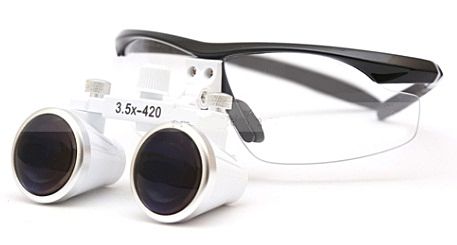
1.Choose the correct magnification and working distance in order to ensure that you work in complete ergonomic harmony with your dental binocular loupes.
2.Look at an object with straight black lines.
The most common signs of poor quality loupes are low resolution, chromatic aberration and spherical aberration. Resolution is defined as an optical system’s ability to form distinguishable images of objects separated by small distances, or to recognize fine detail.
3.Test the magnification.
Choose the lowest comfortable magnification level, as this would provide the widest field of view.
4.Test the working distance.
The working distance refers to the distance between your eyes, and the patient’s mouth. You can measure this while assuming your normal working position, making sure you are comfortable, that your back is straight, and that you are not leaning forward too much.
5.Check the field of view.
A larger field of view is preferred, as there is a larger area visible through the dental surgical loupes, and there is less need to move your head around .
6.Check the depth of field.
A larger depth of field is preferred, as there is a deeper area visible through the loupes. The size of the “depth of field” corresponds directly to the “working distance”.
7.Compare with prescription lenses.
If you use glasses with prescription lenses, it is important that you have the option of fitting your loupes frames with the correct prescription. Otherwise, the loupes will not perform according to specifications.
8.Test the weight of the loupes.
Weight is an important factor when choosing a new loupe. Especially if the loupe is to be used for longer periods of time.